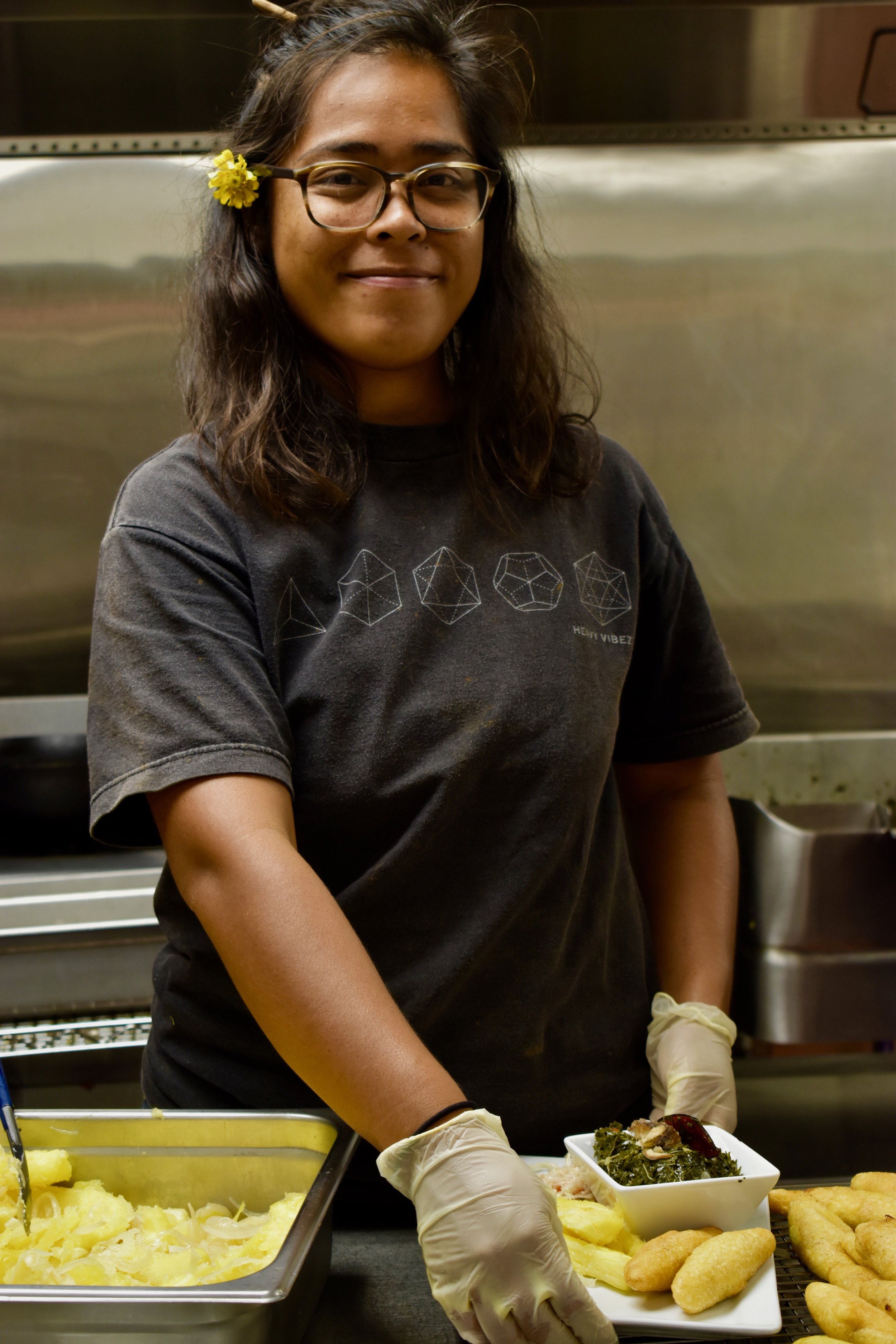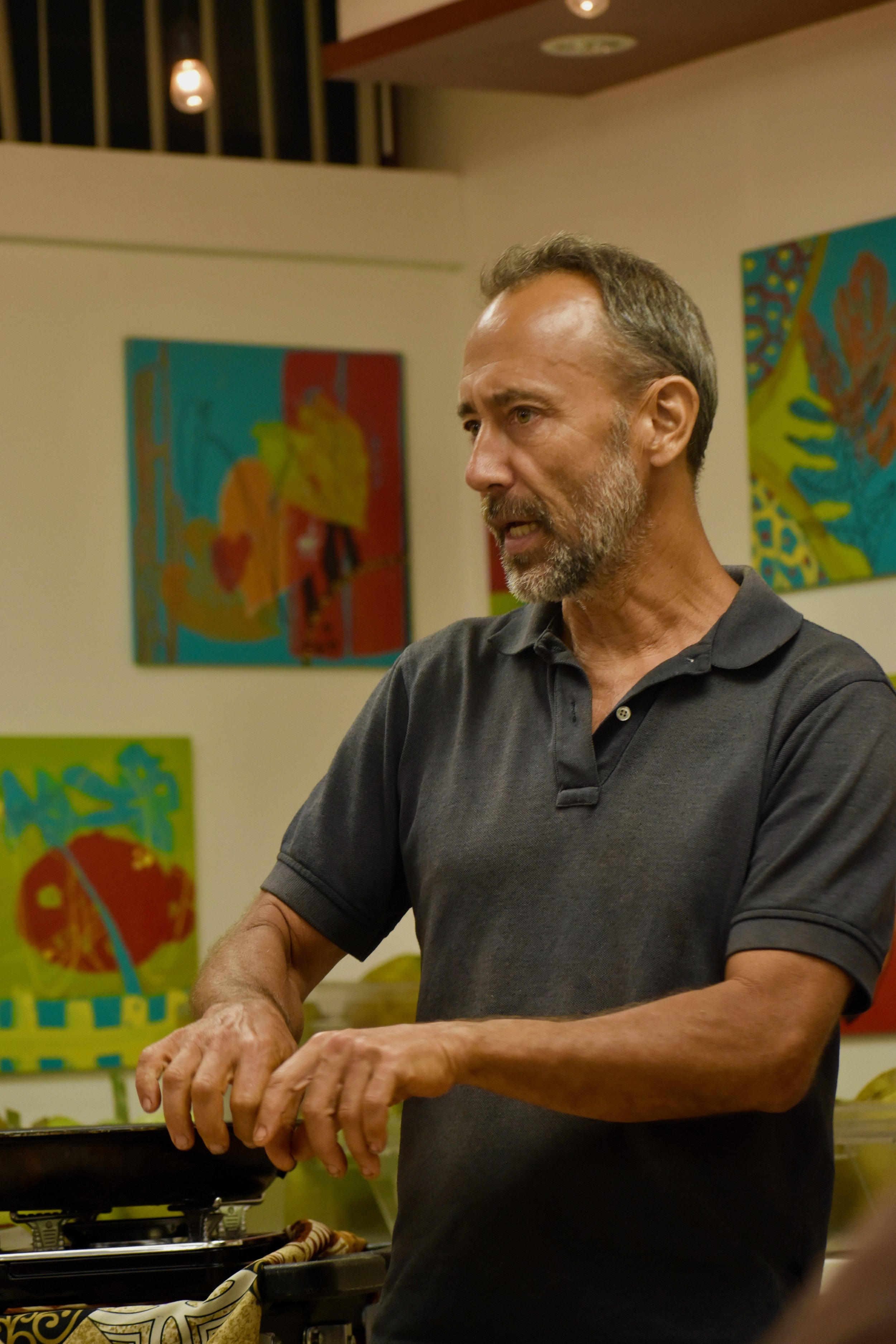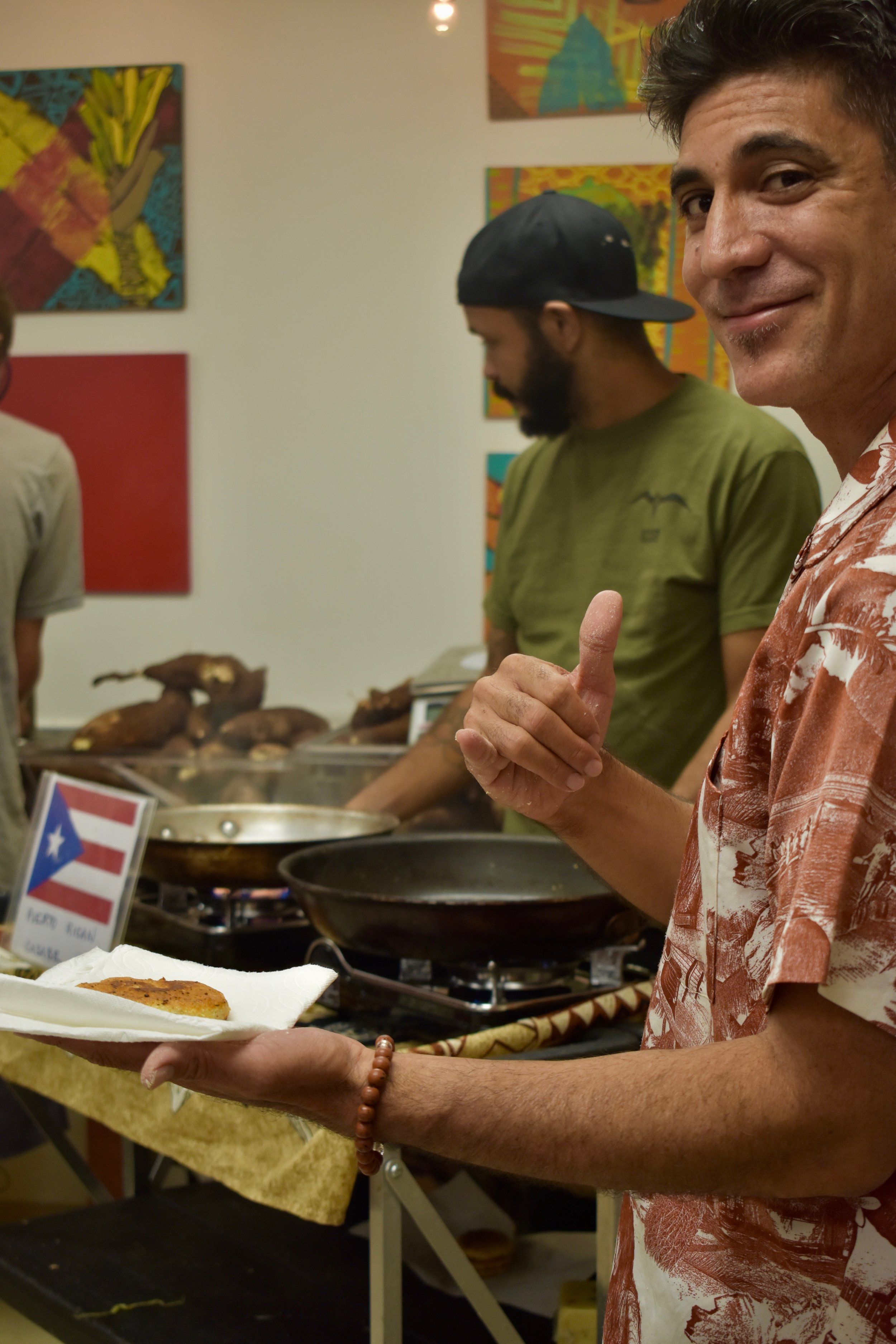A few weeks ago, Roots hosted its quarterly PAINA Coalition Gathering - inviting farmers, agency staff, and community stakeholders together to share stories and resources and to learn about another important crop. This quarter, we learned about cassava!
Manioc, cassava, yucca, tapioca: this tuber goes by many names. Originally from South America, cassava has gradually spread all over the world and today is the staple crop for an estimated 800 million people worldwide. Cassava is an extremely resilient crop. It is drought-resistant, can grow in poor quality soils, and can be propagated from cuttings. Its high starch content provides dietary energy, as well as possessing significant levels of Vitamin C. The leaves are also rich in nutrition, with high levels of plant protein, iron, calcium, and vitamins A and C. This hardy plant also naturally produces cyanide compounds as a deterrent to pests. That may sound off-putting, but cooking eliminates these compounds in both the root and the leaves, making it safe to eat. Just be sure to process your roots or leaves within a few days of harvest. Learn more about this plant here.
We were honored at our event to be joined by some cassasva growers, Tasia Yamamura of UH West Oahu and Mark Hamamoto of Mohala Farm, to answer our questions about growing this amazing plant. We were also thrilled to sample cassava dishes from around the world prepared by friends and neighbors of the program, including Puerto Rican casabe bread, Panamanian carimañolas, and Tahitian po’e. And Roots’ Chef Jesse prepared a West African cassava leaf stew:
West African Cassava Leaf Stew
Featuring UH West Oahu Cassava Leaf, Pae Pae O He'eia Samoan Crab, and Hooah Farm Catfish
Stew Ingredients
3 pounds fresh or prepared frozen cassava leaves
1 pound beef, cubed
½ pound smoked chicken, turkey, or fish
1 medium onion, chopped
½ - 1 cup canola oil
2 cups stock
1/2 cup ground crayfish or other shellfish
4-5 tablespoon peanut butter
1 scotch bonnet pepper
½ teaspoon cayenne pepper (optional)
½ - 1 pound shrimp (optional)
Salt and pepper to taste
Stew Instructions
Process fresh cassava leaves (see instructions below).
In a large saucepan, season beef or smoked meat with salt, pepper, and simmer in 2 cups of stock until tender. Strain meat and reserve both meat and stock.
Heat oil in a large sauce pan over medium heat. Add onions, scotch bonnet pepper, and crayfish and sauté until fragrant, about 1-2 minutes. Add beef and or/smoked meat.
Stir in peanut butter, cayenne pepper, and 1 cup of stock. Simmer for another 5 minutes.
Throw in the drained cassava leaves (see instructions below) and continue cooking for about 5 more minutes.
Finally, if using shrimp, add shrimp - cook until shrimp turns pink, about 3-5 minutes.
Adjust seasonings (stock, salt, pepper) to taste.
Serve warm over rice.
To process fresh cassava leaf
Pluck leaves and wash.
Grind with a mortar and pestle, or blanch leaves then puree in a blender.
Simmer in a pot of water until soft and tender, at least 30 minutes. Drain and set aside.







